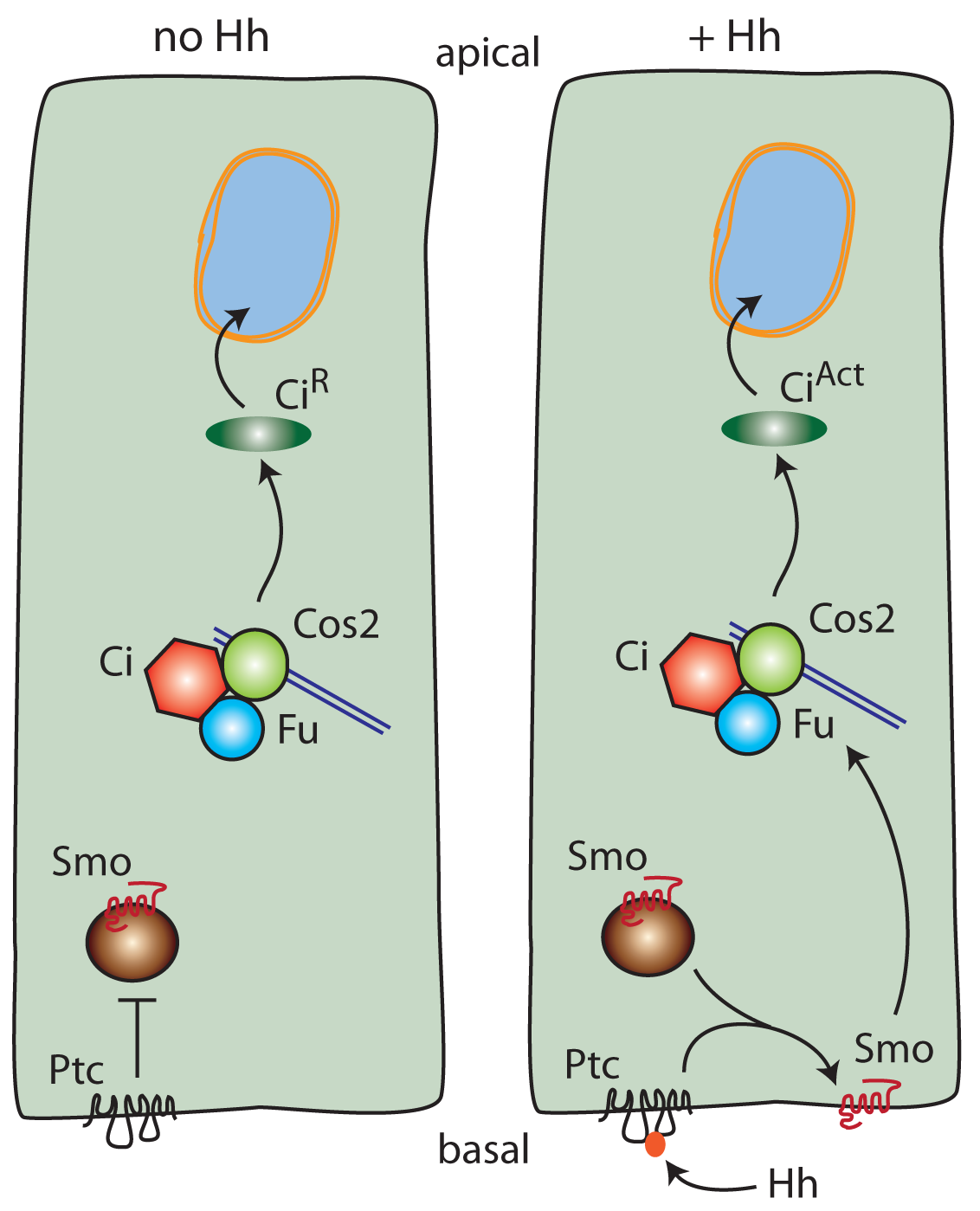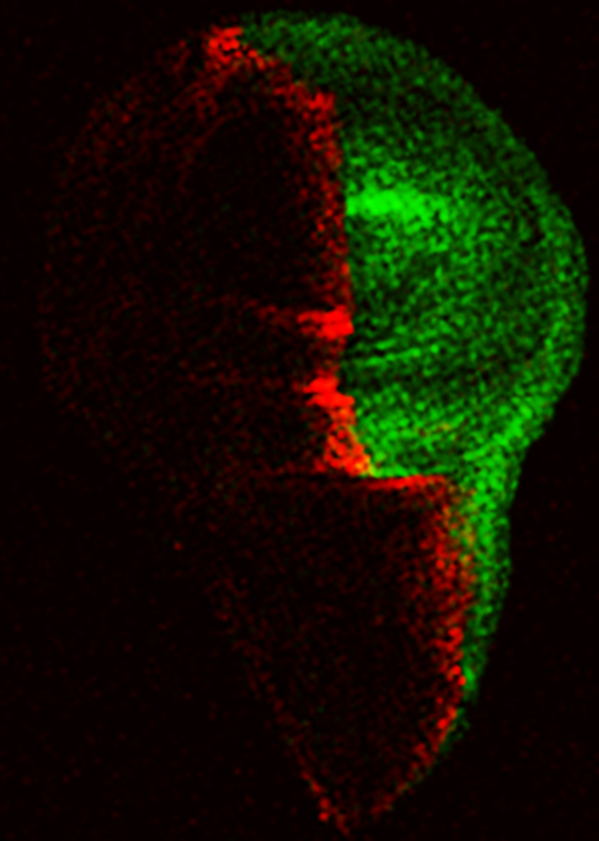Kornberg Lab



Following on from our cloning of the Drosophila hedgehog (hh) gene (Tabata and Kornberg, 1992), our studies showed that the secreted Hh protein moves across segment borders in the embryo and across the Anterior/Posterior compartment border in the embryo and in the wing imaginal disc (Tabata and Kornberg, 1994). We further showed that the role of Hh signaling in the wing disc is to endow target cells in the Anterior compartment with the functionality of a developmental organizer (Tabata et al, 1995) and that the principal output of Hh signal transduction, the regulation of the activity of the transcription factor Cubitus interruptus (Ci), is effected by controlling both the form (full length vs proteolytically truncated) and cellular localization (cytoplasmic vs nuclear) of Ci. Whereas full length Ci can be converted to a transcriptional activator, the truncated form is a transcriptional repressor (Aza-Blanc and Kornberg, 1997). Ongoing studies in the lab employ genetic screens to improve our understanding of Hh signal transduction and apply molecular genetic approaches to better understand the processes that generate the repressor and activator forms of Ci, the mechanism by which Ci regulates its transcriptional targets, and the mechanism by which Hh and other signaling proteins move from source to target cells.